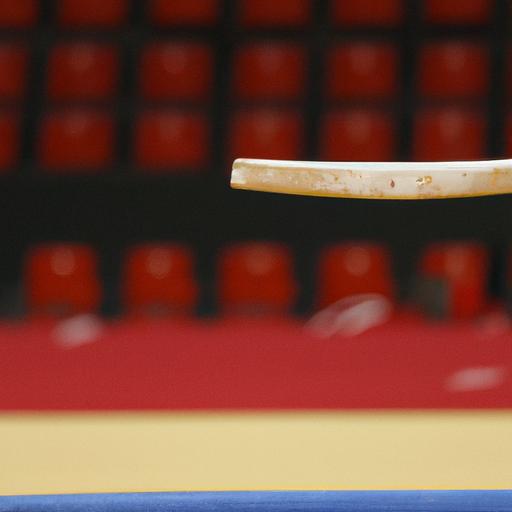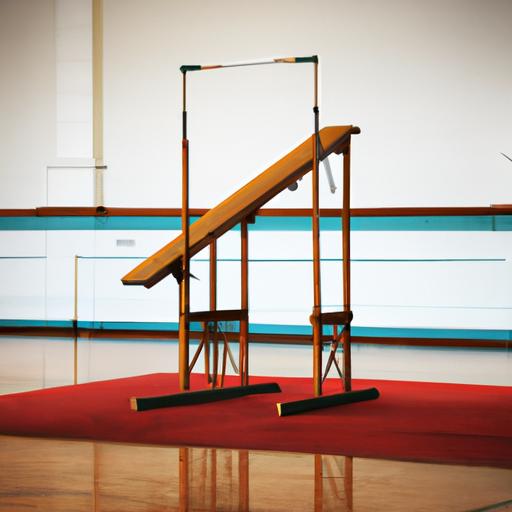Unveil the captivating vaulting horse history, exploring its significance in gymnastics training, core strength development, and associated exercises.
Introduction to Vaulting Horse History

Ah, the vaulting horse – that iconic apparatus that has been an integral part of gymnastics for centuries. As you step into the captivating world of gymnastics, have you ever wondered about the fascinating history behind this essential piece of equipment? Join me on an intriguing journey as we uncover the secrets and historical significance of the vaulting horse.
Importance of Vaulting Horse in Gymnastics
Imagine a gymnast gracefully leaping over a majestic horse, showcasing their strength, agility, and mastery. The vaulting horse has long been a cornerstone of gymnastics routines, allowing athletes to demonstrate their prowess and push the boundaries of human capability. With each vault, the gymnast defies gravity, leaving spectators spellbound by their breathtaking performances.
Overview of the Historical Significance of Vaulting Horse
Now, let’s delve into the rich history and profound impact of the vaulting horse. Ancient civilizations, such as the Greeks and Romans, recognized the value of horseback riding as a form of training and sport. It was during these times that the concept of vaulting, or performing acrobatic maneuvers on horseback, began to take shape.
The vaulting horse, in its earliest form, appeared as a simple wooden structure resembling a horse’s back. This apparatus allowed athletes to practice their jumps and flips, contributing to their physical development and enhancing their equestrian skills. Over time, the design and materials of the vaulting horse evolved, aligning with the changing demands and advancements in gymnastics.
As we continue our expedition through the vaulting horse’s history, we will explore the early origins of this remarkable apparatus and the significant role it played in shaping modern gymnastics. So, saddle up and get ready to uncover the captivating tale of the vaulting horse!
Stay tuned for Section 2, where we will trace the early origins of the vaulting horse back to ancient civilizations, unearthing the historical evidence of its usage in sports and training.
Early Origins of Vaulting Horse
Tracing the Origins of Vaulting Horse Back to Ancient Civilizations
Let’s take a leap back in time to uncover the roots of the vaulting horse. Ancient civilizations, renowned for their athletic prowess, recognized the importance of horseback riding not only as a mode of transportation but also as a means to enhance physical abilities. It was within this context that the concept of vaulting on horseback emerged.
In ancient Greece, renowned for its love of sports and physical fitness, vaulting on horseback became an integral part of training for warriors and athletes alike. The Greeks believed that this practice would improve their balance, coordination, and overall strength. These early gymnastic feats laid the foundation for the development of the vaulting horse as an apparatus.
Historical Evidence of Vaulting Horse Usage in Ancient Sports and Training
As we explore the annals of history, we discover various accounts and artifacts that provide evidence of the vaulting horse’s usage in ancient sports and training. Ancient Greek pottery and sculptures depict acrobats performing intricate maneuvers on horseback, showcasing their agility and skill.
Moreover, historical records highlight the inclusion of vaulting on horseback in ancient equestrian competitions, such as the equestrian events in the Olympic Games held in ancient Greece. These competitions not only tested the horsemanship of the participants but also their ability to perform daring acrobatics while mounted.
The Romans, too, embraced the art of vaulting on horseback. They recognized its value not only as a training method for their cavalry but also as a form of entertainment. Spectacular displays of vaulting prowess were showcased in amphitheaters, captivating audiences with their daring and awe-inspiring performances.
The early origins of the vaulting horse, rooted in ancient civilizations, laid the groundwork for the evolution of gymnastics and the development of this remarkable apparatus. In the next section, we will explore how the vaulting horse has evolved throughout history, adapting to the changing needs of gymnastics.
Stay tuned for Section 3, where we will unravel the evolution of the vaulting horse in gymnastics, highlighting the notable changes and improvements in its design and materials.
Evolution of Vaulting Horse in Gymnastics
Development of Vaulting Horse as a Key Apparatus in Gymnastics
Throughout the course of history, the vaulting horse has evolved from a simple wooden structure to a meticulously designed apparatus that forms the backbone of gymnastics routines. As gymnastics itself transformed into a widely recognized sport, the vaulting horse took center stage, captivating audiences with its challenging yet awe-inspiring nature.
Gymnastics, with its emphasis on strength, flexibility, and precision, demanded a specialized apparatus that could withstand the rigorous movements and techniques performed by athletes. The development of the vaulting horse paralleled the growing complexity of gymnastics routines, providing gymnasts with a reliable platform to showcase their skills.
Notable Changes and Improvements in Design and Materials Used Over Time
Over the years, the vaulting horse has undergone remarkable changes and improvements, both in design and materials, to ensure the safety and performance of gymnasts. Early iterations of the vaulting horse were constructed using simple wooden structures, mimicking the shape of a horse’s back. However, as gymnastics evolved, so did the design of the apparatus.
Innovations in materials, such as the introduction of high-quality wood, foam padding, and synthetic covers, enhanced the stability, comfort, and longevity of the vaulting horse. These advancements not only increased the safety for gymnasts but also allowed for more dynamic movements and routines.
Furthermore, various modifications in the design of the vaulting horse, such as adjusting the height, width, and shape, have been implemented to accommodate the diverse skill sets and artistic expressions of gymnasts. These changes have elevated the possibilities within the realm of gymnastics, pushing athletes to reach new heights and redefine the boundaries of their performances.
As we marvel at the current state of the vaulting horse, we acknowledge the relentless pursuit of perfection that has led to its evolution. The amalgamation of innovation, safety, and performance has transformed the vaulting horse into an indispensable apparatus within the gymnastics world.
Stay tuned for Section 4, where we will explore the inclusion of the vaulting horse as a crucial event in modern Olympic Games and highlight notable performances throughout Olympic history.
Vaulting Horse in Modern Olympics
Inclusion of Vaulting Horse as a Crucial Event in Modern Olympic Games
As the world unites in the spirit of competition and athletic excellence, the vaulting horse takes center stage as a crucial apparatus in the modern Olympic Games. This revered event showcases the remarkable skill and artistry of gymnasts from around the globe, captivating audiences with their awe-inspiring routines.
Within the realm of gymnastics, the vaulting horse event demands a unique combination of strength, precision, and daring. Athletes must exhibit remarkable control as they sprint towards the horse, launching themselves into the air with explosive power. The vaulting horse event truly epitomizes the essence of gymnastics, pushing the boundaries of physicality and embracing the beauty of human movement.
Notable Performances and Achievements in Vaulting Horse throughout Olympic History
Throughout the storied history of the Olympic Games, countless athletes have left an indelible mark on the vaulting horse event. Their exceptional performances and awe-inspiring achievements have become legendary, etching their names into the annals of gymnastics history.
One such luminary is the incomparable Nadia Comăneci, who, at the tender age of 14, captivated the world with her flawless routine on the vaulting horse at the 1976 Montreal Olympics. Achieving the unthinkable, Comăneci scored a perfect 10, an unprecedented feat that forever changed the perception of gymnastics.
In more recent years, Simone Biles, a force to be reckoned with in the gymnastics world, has showcased her remarkable talent on the vaulting horse. Her unparalleled athleticism and unwavering determination have propelled her to new heights, securing numerous gold medals in this event and solidifying her status as one of the greatest gymnasts of all time.
As we witness these extraordinary performances and witness the evolution of the vaulting horse event in the modern Olympics, we are reminded of the enduring legacy of this apparatus and the incredible athletes who continue to push the boundaries of human achievement.
Stay tuned for Section 5, where we will explore the role of the vaulting horse in gymnastics training, uncovering its importance in developing core strength and balance in gymnasts.
Contemporary Usage and Future of Vaulting Horse
As we near the end of our exploration into the captivating history of the vaulting horse, let’s take a glimpse into its contemporary usage and the exciting possibilities that lie ahead.
Current Trends and Practices
In the modern era, the vaulting horse continues to hold its esteemed position as a vital apparatus in gymnastics training. Gymnasts rely on this sturdy companion to develop their core strength, balance, and overall athleticism. The vaulting horse serves as a platform for honing their skills, allowing them to perfect their techniques and push the boundaries of their performance.
Contemporary training techniques have evolved to maximize the benefits of the vaulting horse. Coaches and gymnasts employ a variety of exercises and drills to enhance their skills, including dynamic jumps, handstand drills, and creative dismounts. By incorporating the vaulting horse into their training routines, gymnasts can unlock their full potential and achieve remarkable feats.
The Future of Vaulting Horse
Looking ahead, the future of the vaulting horse is brimming with innovation and progress. As technology continues to advance, we can expect further advancements in the design and materials used for the vaulting horse. These developments will prioritize safety, providing gymnasts with a secure and dynamic apparatus to unleash their talents.
Moreover, the incorporation of digital technologies and virtual reality may revolutionize the way gymnasts interact with the vaulting horse. Imagine a world where gymnasts can simulate routines, receive real-time feedback, and visualize their performances on a virtual vaulting horse. Such advancements have the potential to revolutionize training methodologies and elevate the sport to new heights.
In conclusion, the vaulting horse has stood the test of time, leaving an indelible mark on the world of gymnastics. Its historical significance, importance in training, and potential for future advancements make it an enduring symbol of athleticism and grace. So, as we continue our journey in the realm of gymnastics, let us cherish the legacy of the vaulting horse and embrace the exciting possibilities that lie ahead.
Thank you for joining me on this captivating voyage through vaulting horse history. To explore more fascinating insights and enhance your equestrian expertise, visit Horsemasterypro.com.


